With a reputation as a happening, hip amalgam of culture, style and diversity, Montreal is the largest city in the Canadian province of Quebec, a province where most people speak French as their first language. There is a unique look & feel to the city, its people, their food and the city architecture.
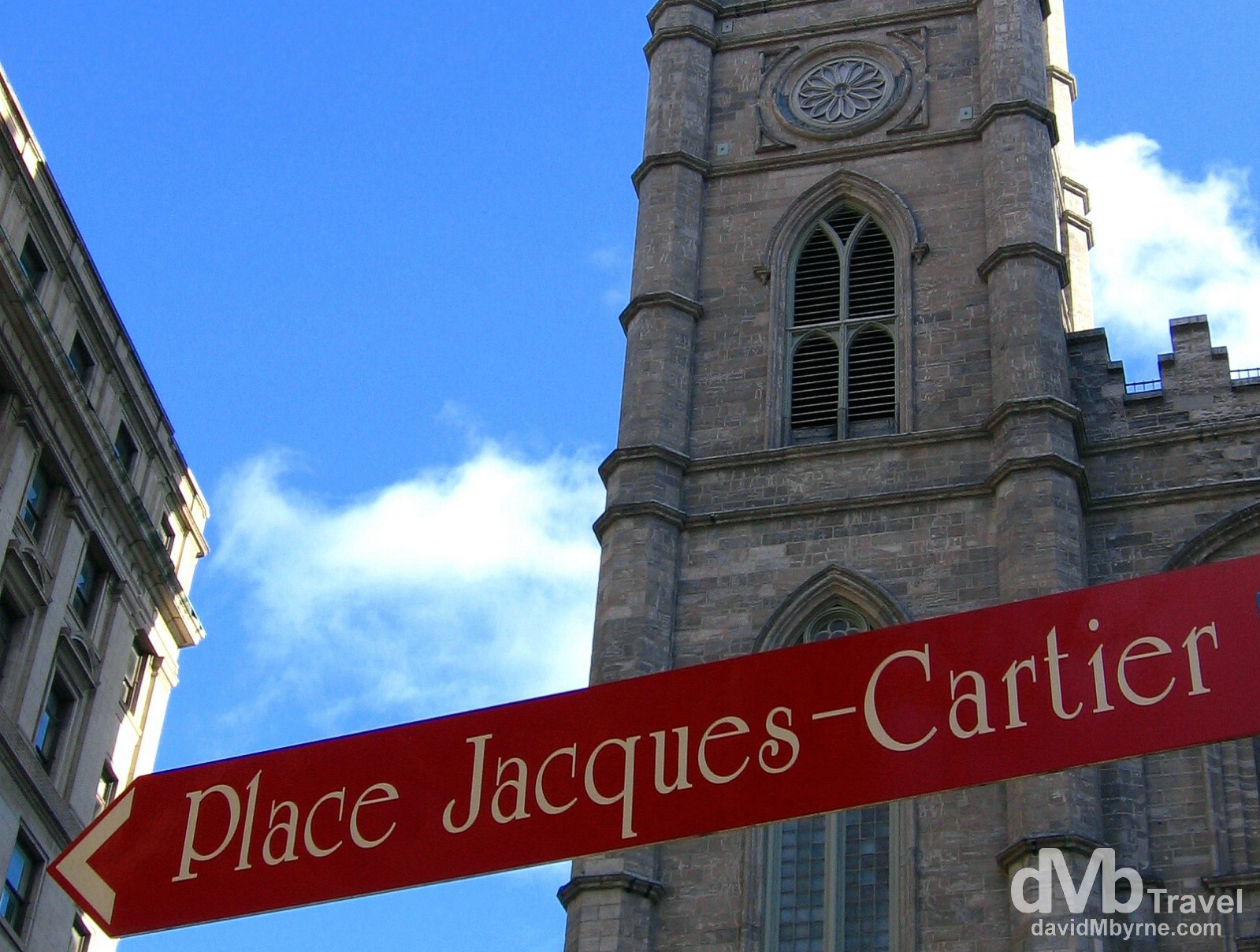
A sign in Place D’Armes, heart of Old Montreal and a beehive of activity, especially in the summer when it’s filled with flowers, street musicians, vendors and visitors. The cafes lining the street provide front-row seats of the action. Jacques Cartier himself was a French explorer, the first French man to stumble across the area some 100 years before Paul Chomedey de Maisonneuve led his team of pioneers across the Atlantic to establish a settlement. The unique non-Canadian, francophone look & feel to Montreal, especially here in Old Montreal, make it a unique & charming place to visit. It’s true that it is the leisurely pace, the joie de vivre and the ineffable way of life that most touch the visitor. According to my guidebook in the summer months you can “almost make out the strains of accordion music and the sweet song of Parisienne chanteuse lilting in the Old Montreal breeze,” something that was absent on this bitterly cold November afternoon. Old Montreal, Montreal (![]() ), Quebec, Canada. November 18th, 2005.
), Quebec, Canada. November 18th, 2005.
Independent Quebec
Montreal’s uniqueness also extends to the rest of the Quebec province, something immediately obvious as soon as you cross over the border into Quebec where all the road signs change to French. It’s almost as if the province goes out of its way to be different if for no other reason than to be different. And it’s for this reason that Quebec is often at odds with the rest of English-speaking Canada. Since the end of World War II the province has periodically threatened to secede from the confederation believing it hasn’t received its fair share of Canada’s economic growth and wealth. However, since 1976 two referendums have returned ‘No’ votes on the question of ceding from Ottawa and while the issue remains alive today, it’s no longer topical. The notion of an independent Quebec is less attractive to a younger generation with more global concerns. Nonetheless Québec’s Francophones know who they are; they are Quebecers first and Canadians second. They have always viewed their province as a nation and as a result the parliament building in Quebec City, the provincial capital, is the Assemblee Nationale (National Assembly) and the province-run parks are called Parcs National (National Parks).
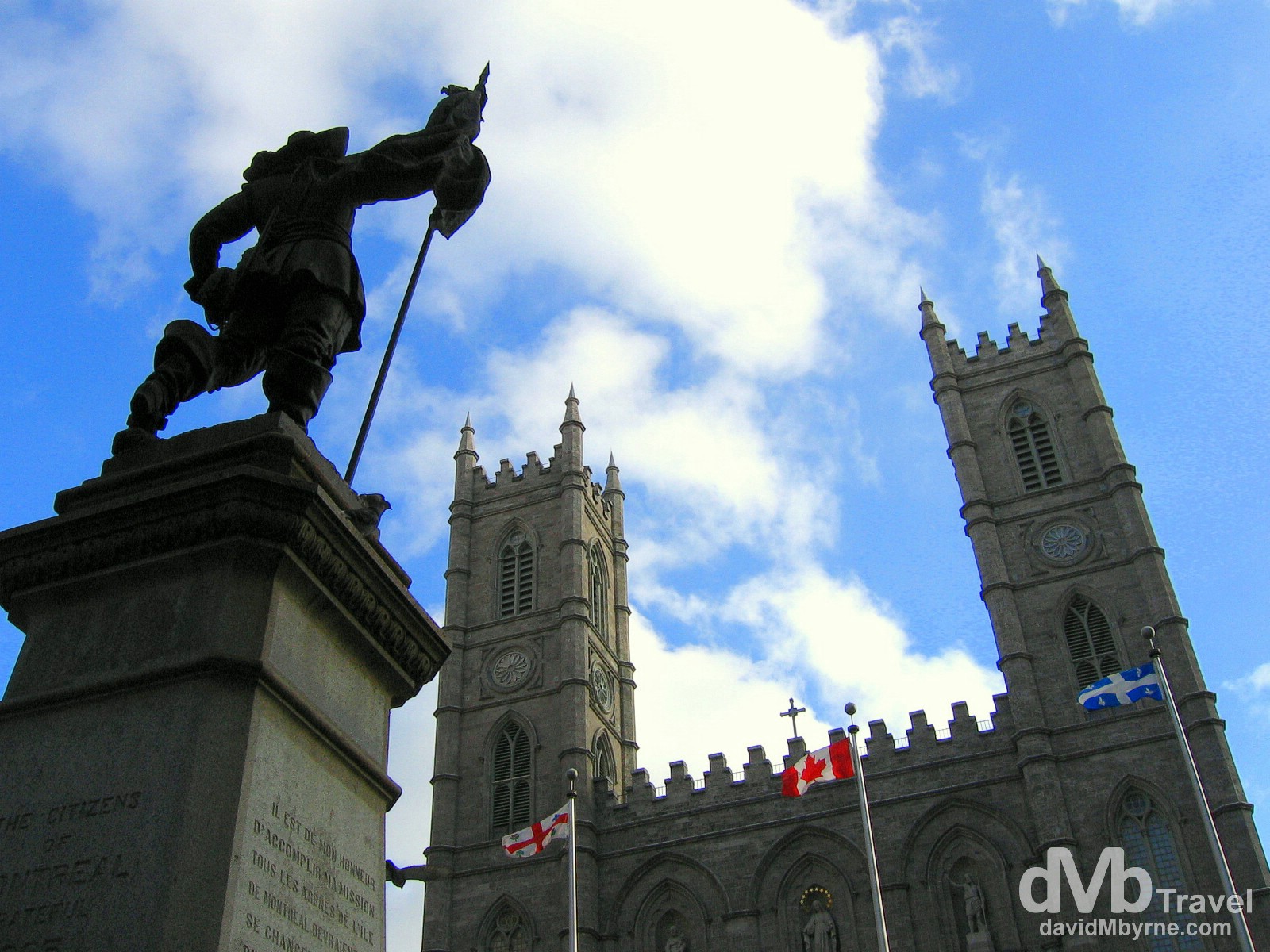
The twin towered Notre-Dame Basilica lords over Palace D’Armes, a dignified square where settlers once battled it out with the local Iroquois. The statue seen here is of Paul Chomedey de Maisonnevue who, in 1642, led a bunch of settlers from France who built a small settlement they called Ville-Marie which, & despite fierce resistance from the local Iroquois, eventually blossomed into present-day Montreal. The square sits in the Old Montreal area of the city and is surrounded by many of Montreal’s finest historic buildings including the oldest building in the city, the Old Seminary, and the Bank of Montreal Head Office, Canada’s oldest bank. The Basilica itself was built in 1829 and has the usual mixture of carved wood, paintings, sculptures and stained glass windows. It also sports a famous Casavant organ and the Gros Bourdon, said to be the biggest bell in North America. The basilica hit the headlines in 1994 when Celine Dion got married under its soaring midnight-blue ceiling, and again in 2000 when Jimmy Carter and Fidel Castro shared pall-bearing honours at the state funeral of former Canadian PM Pierre Trudeau. Place D’Armes, Old Montreal, Quebec, Canada. November 18th, 2005.
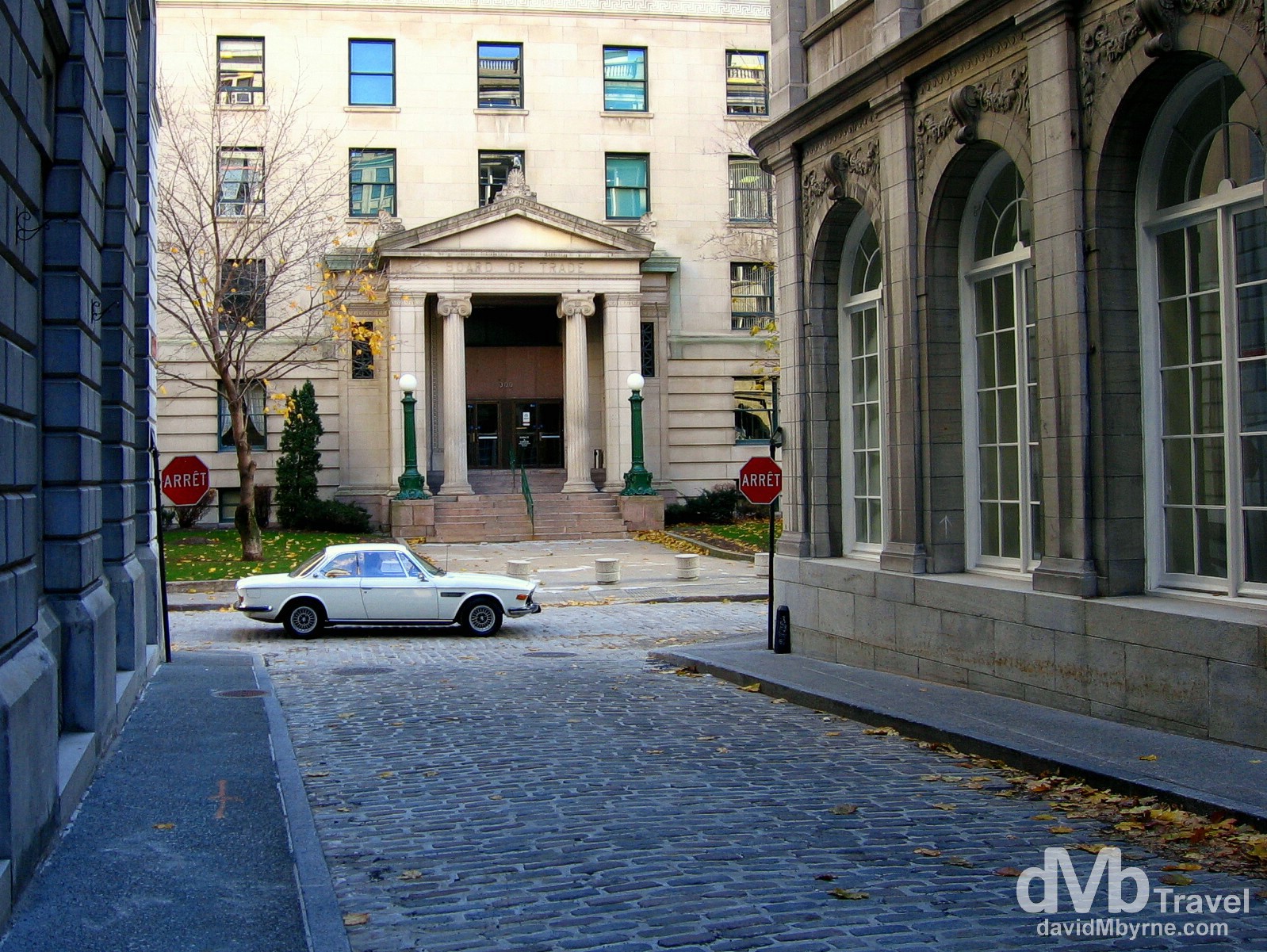
Rue St-Paul Est in Old Montreal, the oldest section of the city. It’s a warren of crooked cobblestone lanes flanked by colonial and Victorian stone houses filled with intimate restaurants, galleries and boutiques. Rue St-Paul Est, Montreal, Quebec, Canada. November 18th, 2005.
Montreal’s Architecture
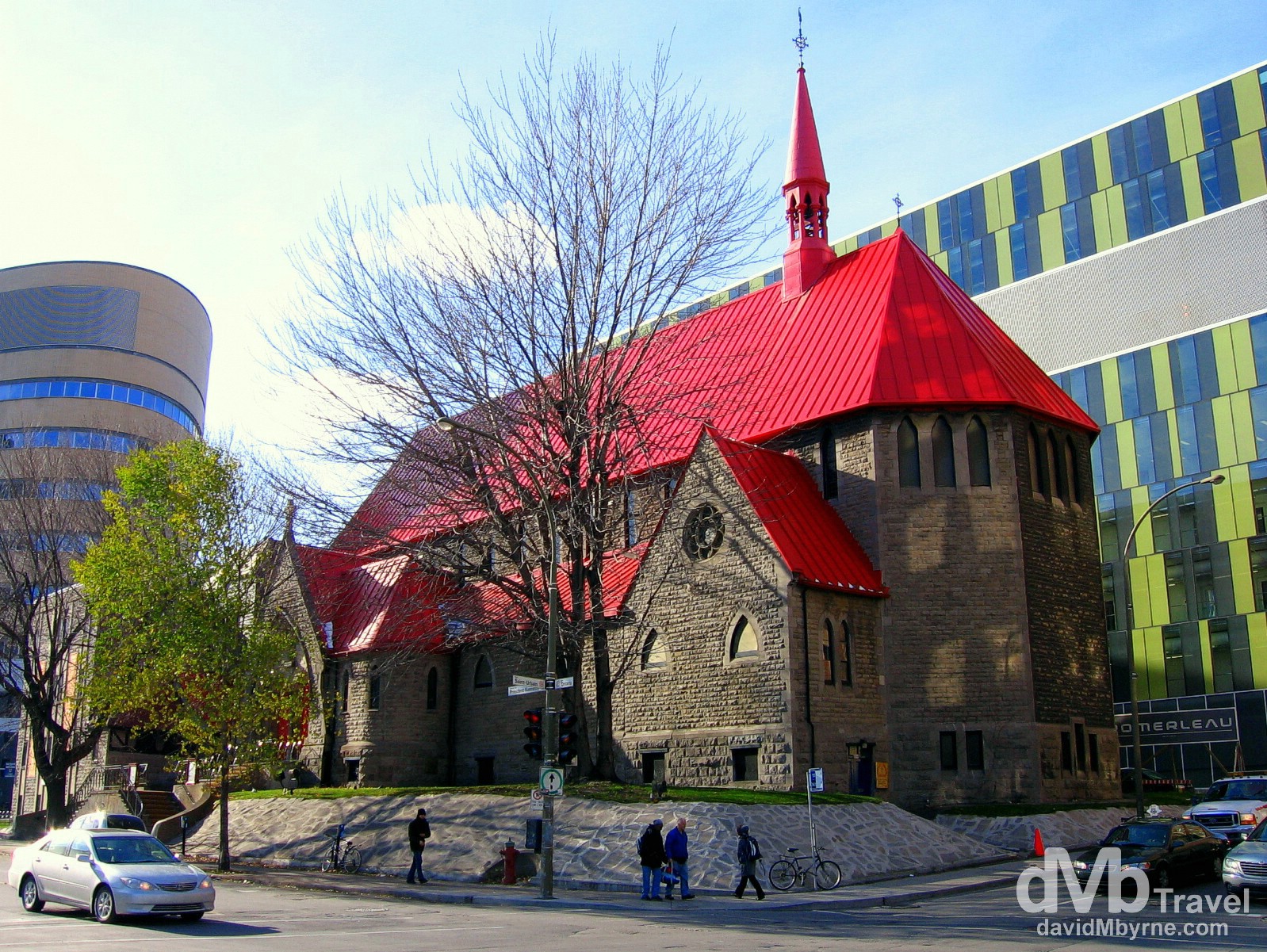
One of the unique aspects of Montreal is its architecture, with Victorian houses in tree lined neighbourhoods and weird styles abound. This is a picture which, for me, sums up the various architectural styles on show in Montreal – a red roofed church surrounded by a green chequered building on one side and an orange cylindrical building on another. Downtown Montreal, Quebec, Canada. November 18th, 2005.
Saint Joseph’s Oratory || Canada’s Largest Church
Saint Joseph’s Oratory is a Roman Catholic minor basilica and a National Historic Site of Canada commanding a spectacular hilltop location on the city’s Westmount Summit.
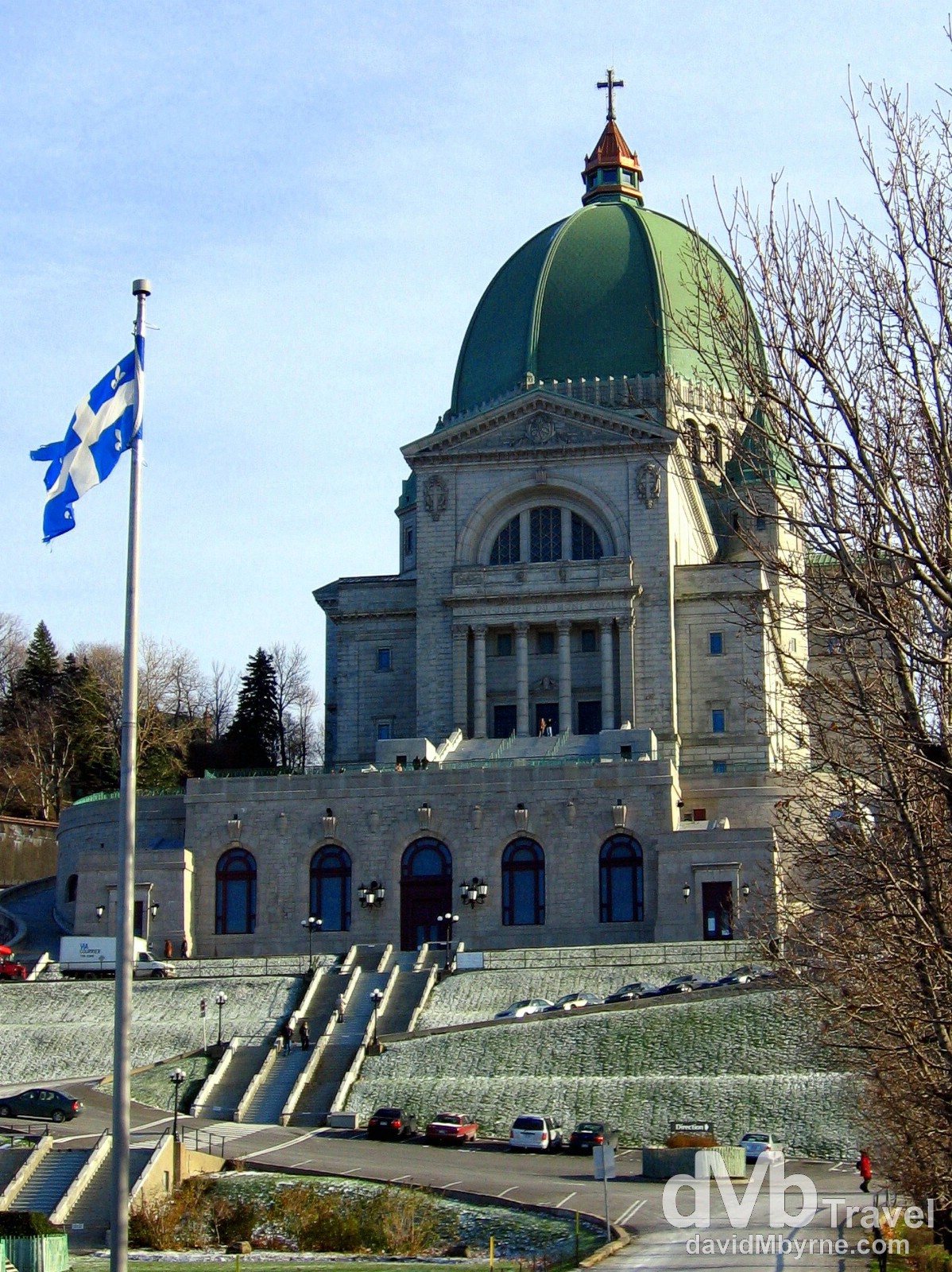
Gigantic, domed St. Joseph’s Oratory commands a spectacular hilltop setting just west of Montreal’s Parc du Mont Royal, the city’s ‘mountain’, a sprawling, leafy playground with great views over the city and a perfect escape for cyclists, joggers and picnicking locals. St. Joseph’s is Canada’s largest church & also the largest shrine in the world honouring Jesus’ father, St. Joseph, also Canada’s patron saint. It began life in 1904 as a modest church built by a monk named Brother Andre. Andre, who was beatified by Pope John Paul II in 1982, had a knack for healing which brought droves of people to the church in hopes of a miracle. Andre’s fame grew & in 1917 the structure needed to be enlarged to accommodate the numbers of pilgrims. Between 1937 and 1939 the present-day dome was added; it’s the third-largest of its kind in the world after the Basilica of Our Lady of Peace of Yamoussoukro in Côte d’Ivoire and Saint Peter’s Basilica in Vatican City. The structure was finally completed in 1967. Many of the crutches left by the cured still fill the chapel today while Brother Andre’s heart is also on display – it was stolen in 1973 (who would do such a thing?) but miraculously resurfaced a year later. The blue and white flag flying to the left of the picture is the provincial flag of Quebec. Oratoire St. Joseph (![]() ), Westmount Summit, Montreal, Quebec, Canada. November 18th, 2005.
), Westmount Summit, Montreal, Quebec, Canada. November 18th, 2005.
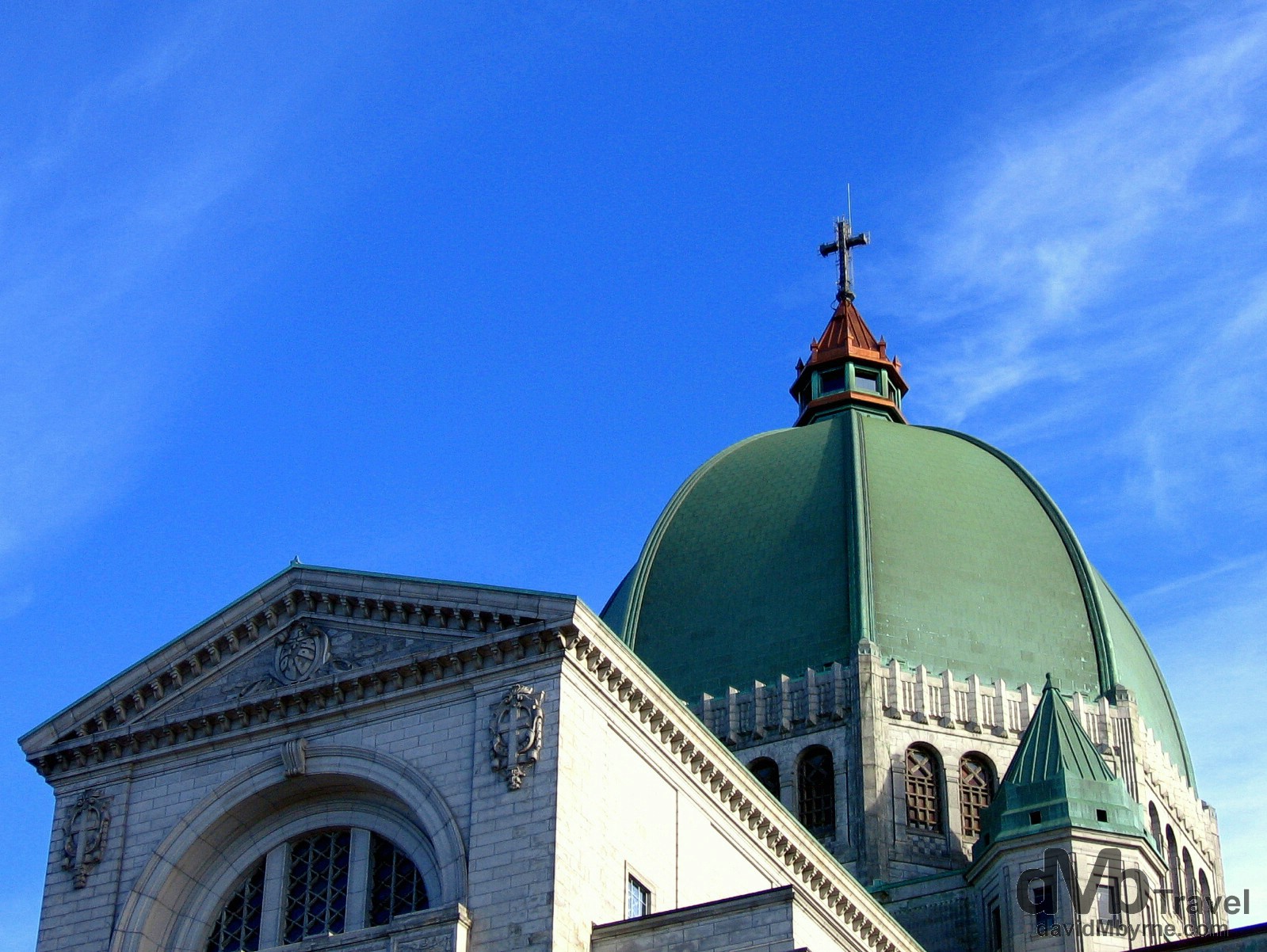
Saint Joseph’s Oratory, Westmount Summit, Montreal, Quebec, Canada. November 18th 2005.
______________________________________________________________________
